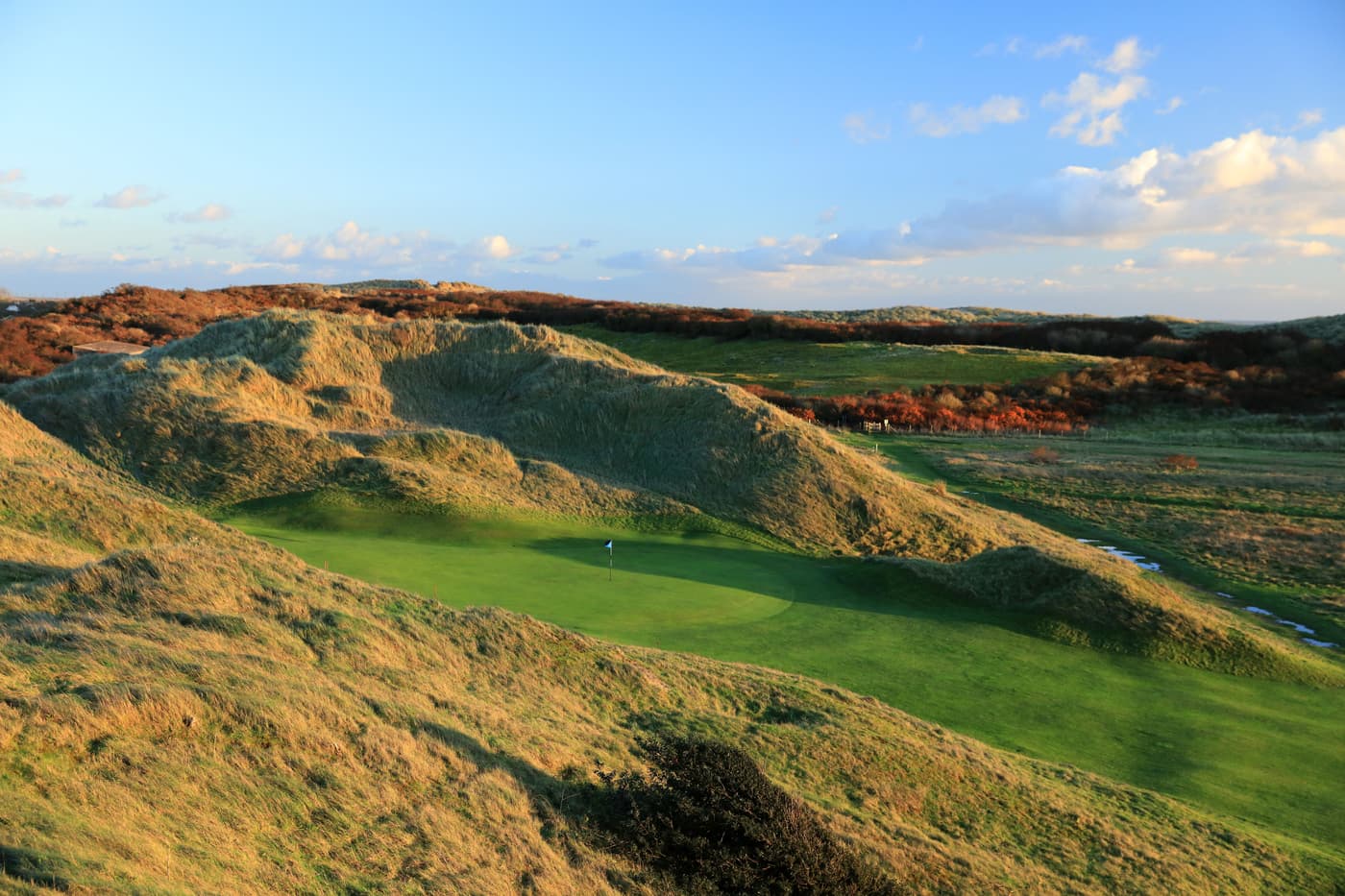
Rye (Old)
Rye, England
- AddressCamber Rd, New Lydd Rd, Rye TN31 7QS, UK
- Championships hosted
“Rye - and there are surely few pleasanter places to get to,” wrote Bernard Darwin in The Golf Courses of the British Isles. “It looks singularly charming as the train comes sliding in on a long curve, with the sullen flat marshes on the left and the tall cliff on the right, while straight on in front are the red roofs of the town huddled round the old church. We have only a few yards to walk along a narrow little street; then we twist round to the right up a steep little hill and under the Land Gate and we are at the Dormy House, old and red and overgrown with creepers.”
So, we've arrived at Rye, but will we get a game? Well, Rye Golf Club is so very private that it is exceedingly difficult to secure a tee time. It is easier to get a game on the Old course at St Andrews. In Darwin's day, things were very different: “It is the ideal place for the golfer who is wearied out with a fortnight's fruitless balloting at St Andrews, which has resulted in his once drawing a time, and that at 12.30.” They say patience is a virtue, and all good things come to those that wait. So, if you've always wanted to play Rye, try writing to the Club Secretary. You never know your luck. Or, as James W. Finegan wrote in All Courses Great and Small: “...with the planets properly aligned, you may just find yourself on the 1st tee, under the warning eye of the clubhouse clock, ready to embark on the splendid adventure”. But wait a minute... the club has recently launched a new website and many say it is now easier to get a game.


Rye was founded in 1894. A 25-year-old Harry Colt laid out the course - surely one of the most impressive debut designs in history. Colt later became Rye's secretary. Today's layout bears the hallmark of Tom Simpson and Sir Guy Campbell, though the Second World War almost obliterated the links and a flying bomb almost destroyed the clubhouse. But, thanks to the faithful few, Rye rose up like a phoenix.
“The two great features of golf at Rye are the uniformly fiendish behaviour of the wind and the fascinating variety of the stances,” wrote Darwin. “The wind presumably blows no harder than it does anywhere else, but the holes are so contrived that the prevailing wind, which comes off the sea, is always blowing across us.” “If you suffer from a lack of balance,” wrote Patric Dickinson in A Round of Golf Courses, “this is not the course for you: it is seldom that you get a flat stance, this is one of Rye's real tests. The fairways nearly always undulate and you will find you must play a full shot from the side of a miniature down and one foot on a level with your nose.”
With a measly par of 68, and a course that measures over 6,300 yards, Rye has to be one of the toughest courses in Britain. The one and only par five hits us straight away and it comes too early in the round to take too much advantage. The five short holes are outstanding but brutal, with alarmingly elusive elevated greens. The remaining twelve par fours are there for the taking - well, three of them at least. Nine others, yes nine, measure more than 400 yards in length. Rye is a battleground and there are so many good holes that it is unwise to list any.
“Surely there can nowhere be anything appreciably better than the golf to be had at this truly divine spot,” concluded Darwin, in his article about Rye.
In 1956, following the death of his wife, Darwin moved into the Dormy House at Rye. On the 18th October 1961, in Filsham House Nursing Home at St Leonards, Hastings, Bernard Darwin died, aged 85. His leather armchair (bequeathed by Bernard's grandfather Charles) now rests close to the window of the men's bar at Rye Golf Club.
Course Reviews
Leave a Review
This course has not been reviewed.
If you have played this course, consider .
Thanks for the review
Your review has been successfully submitted and will be reviewed for approval.
Course Reviewed
You’ve already submitted a review for this course.
Course Architect
View All
Harry Colt studied law at Clare College, Cambridge. Twelve months after his 1887 enrolment, he joined the committee of the Cambridge University Golf Club and in 1889 became the club's first captain.



